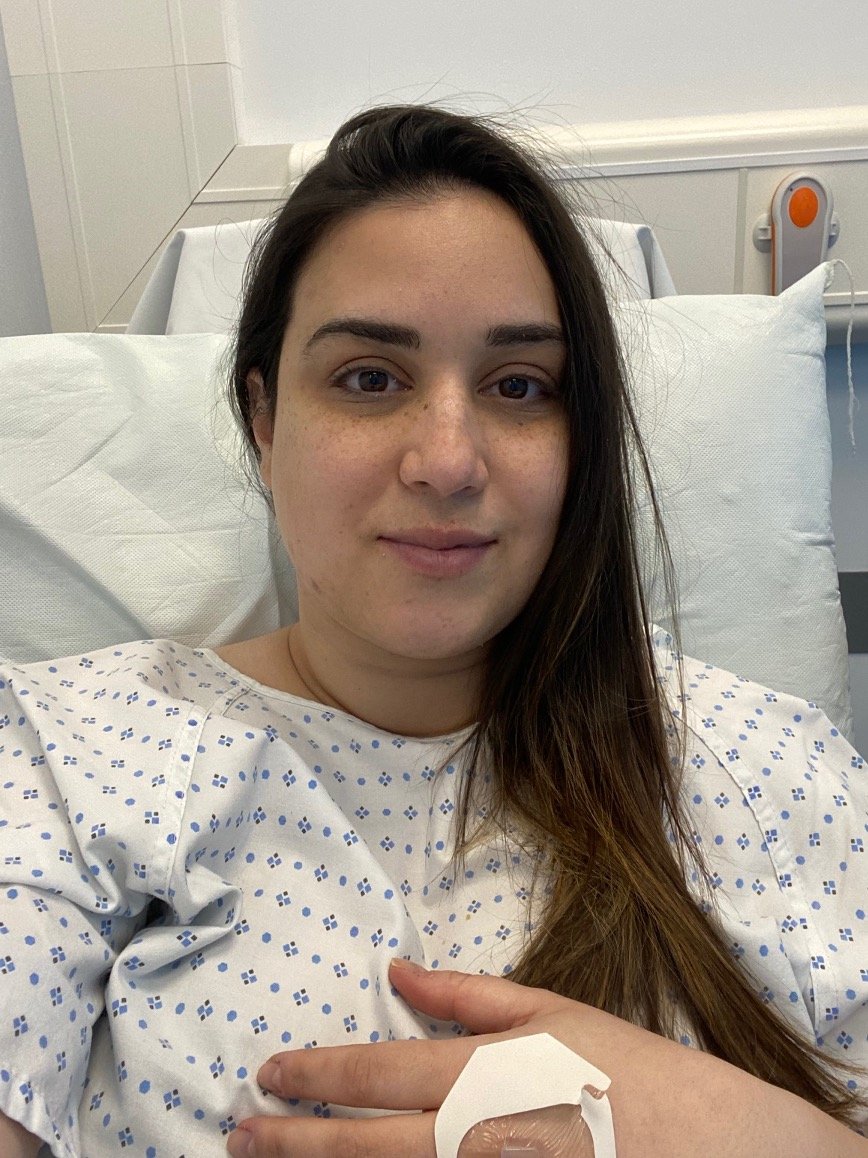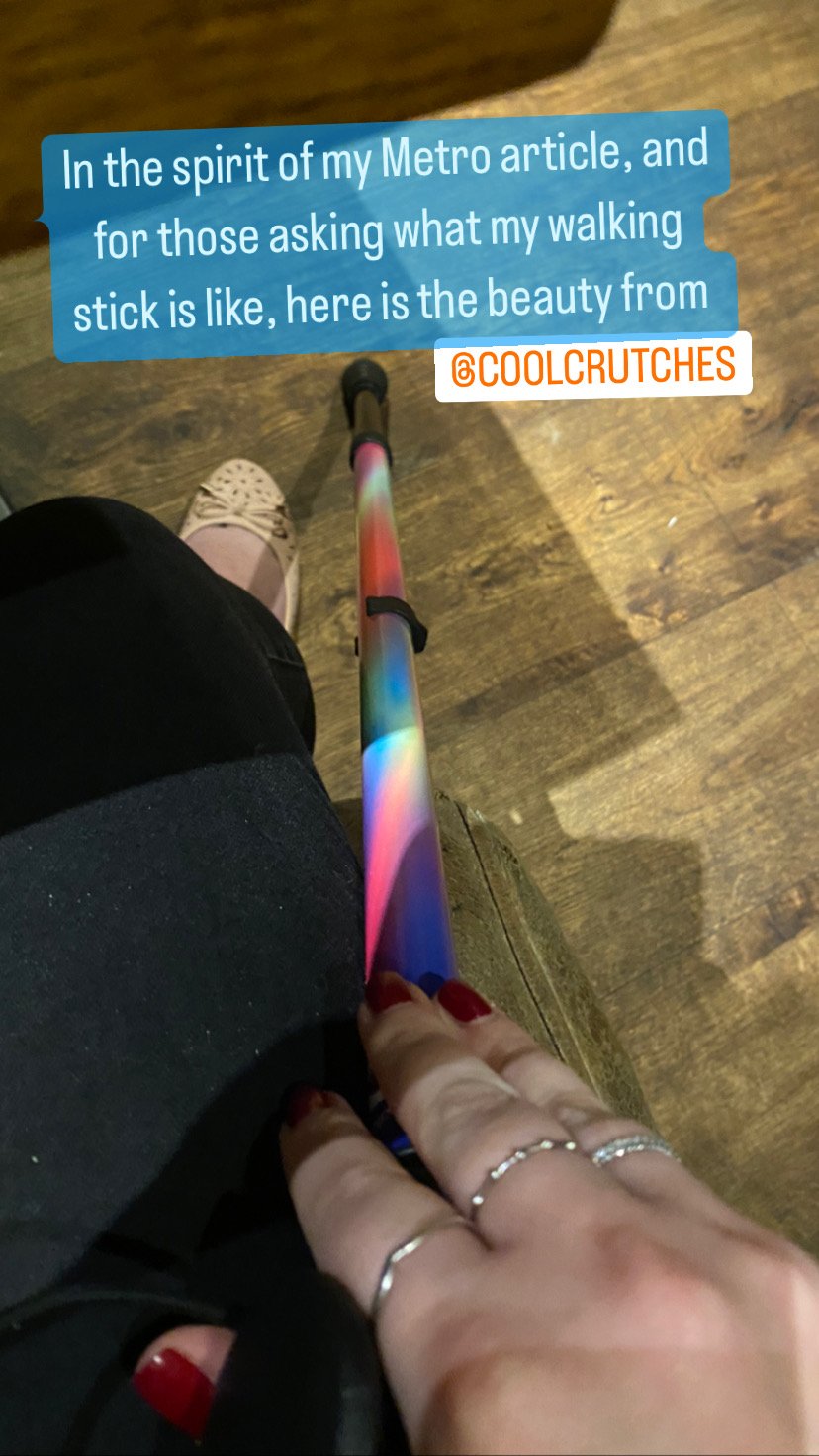20-year wait for rare diagnosis
I spent a lifetime in pain before solving the medical mystery myself
Exclusive | 3 min read | Rare Diseases Day
You know when you squint really hard at the night sky, you can only see one or two stars at once, but when you relax your eyes they all start to glisten and dance into your periphery?
That’s how I’ve observed my constellation of strange and seemingly unlinked physical symptoms for over 20 years.
From the age of 15, I kept suffering strange injuries. Injuries without injury. Knee pain, back pain, wrist pain.
I was sent for physiotherapy and scans and nobody seemed to have an answer. But physiotherapy didn’t help and exercise hurt.
I went on with my life, punctuated by surgeries reserved for sports people, unknowingly suffering from hypermobile Ehlers-Danlos Syndrome - a genetic connective tissue disorder.
History
It would be more than 20 years before I had a diagnosis.
At 15, I had a right wrist ganglion - where the tendon bulges out and is often seen in tennis players or golfers. It happened from writing during my GCSEs. My left wrist suffered the same fate a year later when I moved a small suitcase at the airport.
My left knee’s tendons shredded like a seasoned footballer after driving a manual car for 18 months in my early twenties.
I burst a disc in my lower back helping someone up the stairs at 26.
I tore the labrum - cartilage - in my hip during pregnancy at 30 - the sort of injury often afflicting professional tennis players, gymnasts and Olympic skiers.
I lived with sciatica for years, too. My muscles were easily pulled and I dropped things because my wrists were weak. The base of my thumbs hurt when I texted, drove or wrote Christmas cards. My arms, legs, wrists and fingers all bent way too far and my clickety double-jointed body parts made people squeal.
In my early thirties, after two surgeries on my left hip and persistent bursitis (inflammation) around it, I had five rounds of steroid injections into the area - all to no avail.
Physiotherapists didn’t know what to do with me. Neither did my world-renowned hip surgeon, who kept pushing physio I couldn’t manage. GPs prescribed increasing opiates, anti-inflammatories and medications to control all the side effects.
I tried yoga, Pilates, swimming, targeted exercises, internal physiotherapy, infrared therapy and got sucked into nano technology pain relief pads costing hundreds of pounds. Nothing worked.
Unknown
I grew anxious, depressed. Working became excruciating, my husband and daughter missed out on the best parts of me, and above all I suffered. Every minute of every day.
All that time, I battled severe endometriosis too. I had four keyhole laser surgeries and later had my troublesome left ovary removed and the disease deeply excised from my pelvic and reproductive organs. I went on high dose progesterone to stop my cycles, and waited.
But my pain continued and I began to question things.
Why was I still unable to sit? And why was I now increasingly struggling to stand up or walk? Why was my fatigue so crushing? Why did it take four hours for my painkillers to digest? Why was I dizzy so often?
And why was everything getting so much worse? So much so I needed a walking stick at 36?
Late last year I Googled why can’t ‘I stand, sit or walk anymore?’ and happened upon an article about managing pain flares when you’re hypermobile. Many medics had told me over the years I was hypermobile and reading the article, about managing hypermobility spectrum disorder and hypermobile EDS pain flares, the stars dancing in my peripheral vision came sharply into focus.
It sent me down a rabbit hole on both conditions and then I hit upon a feature about the revenge of gaslit patients, quoting brilliant postdoctoral researcher Cortney Gensemer, a young geneticist with hypermobile Ehlers-Danlos Syndrome, who was devoting all her time to studying it.
Lightbulb moment
As I read through the hEDS symptoms she suffered, I began to shake. It was like she had stepped into my body and was describing exactly how it felt to be me.
This was it, I realised. Though I’m not a doctor, of this I was sure: hypermobile EDS was exactly what I’d unknowingly had all those years. It explained everything.
Every injury, symptom, physical difficulty. Even things in my family history like resistance to local anaesthesia, dental issues, silky smooth skin, mitral valve issues, low blood pressure, bowel issues and incredible sacroiliac joint pain that made the strongest women I know sob with pain.
So I did what most women my age do… I went on TikTok and searched for hEDS videos.
Thousands of videos with millions of views popped up with sufferers who’d been diagnosed with hEDS showing their bendy joints and unnatural ranges of movement to the camera.
In the comments, hundreds of others listed their symptoms. I had nearly all of them. Things I didn’t even realise were abnormal about my body suddenly came under sharp scrutiny.
Having been gaslighted by GPs for years, I knew I’d have to go in and advocate so strongly for myself, she’d have no choice but refer me to a rheumatologist.
My hEDS symptoms
•Hyper-mobility of my joints and subluxations (dislocations)
•Chronic fatigue
•Labral tears
•Vit D and B12 deficiency
•Stretchy, silky skin
•Pain in joints and muscles
•Nausea
•Inability to tolerate physio or exercise
•Tendon injuries and bursitis
•Immobility and difficulty walking, standing or sitting
•Immunity to local anaesthesia
•Easy bruising and veins that collapse easily
•Prolonged healing
•Dental crowding and high palate
•GI symptoms and GERD (reflux)
•Co-morbidities like endometriosis and disautonomia (both stories for another day).
Photo: vT Features
I spent three months researching. I hunted down the diagnostic criteria (much trickier than it should have been), worked through the U.K. GP tool kit, read clinician guides and research papers from all over the world.
I watched lectures from professor Rodney Graham, a rheumatologist affectionately referred to in patient groups as the ‘grandfather’ of hEDS management as well as spending hours lost in the endless pages of resources on The London Hypermobility Unit’s website.
In one video, professor Grahame described the barriers patients face getting a diagnosis and cited medic ignorance as one of the top issues.
It’s widely said in medical circles that when you hear hooves think horses not zebras. But sometimes, it really is a zebra.
It’s fitting that the symbol for EDS is a zebra, with the slogan ‘if you can’t connect the issues, think connective tissues.’
The condition impacts pretty much every system in the body because of what is thought to be defective collagen. Collagen is the building block of our bodies, present in skin, hair, teeth, bones, tendons, ligaments, cartilage, organs and veins. Is it any wonder our symptoms are so vast?
It is thought to affect one in 5000 people, but the true number isn’t known and widely debated as it’s so hard to diagnose. It’s very likely thousands of sufferers are living with hEDS and the pain, confusion and crucially, no diagnosis or appropriate management.
In the UK, hEDS takes 11 years to diagnose on average. Mine took a whopping 20. The NHS GP I went to most recently luckily was familiar with hEDS and agreed it looked like I had it and referred me to a rheumatologist.
Diagnosis
I acknowledge my incredible privilege in having private healthcare and the fact I chose exactly which rheumatologist I wanted to see, where and when. Those going via the NHS may wait 11-18 weeks on average to see a rheumatologist (check for more accurate local hospital waiting times on My Planned Care) who more often than not will lack enough expertise in EDS to diagnose it.
I’m in contact with patients who waited a year, only to be gaslighted or dismissed.
Luckily, my excellent rheumatologist diagnosed my hEDS after taking a full history and doing a thorough physical exam. She had no doubt I have hEDS and neither do I.
It is exceptionally challenging, intolerable and sometimes, hope fades. But then, after a few days in bed I feel a little bit more human again and try to get on with things the best I can.
Management
There are 13 different sub types of Ehlers Danlos Syndrome, each one rarer than the next. I have the most common type, hypermobile, but it’s the only one without a specific genetic test (yet) though scientists in Poland isolated a gene likely the cause just this month.
The science is progressing but it’s more important than ever to raise awareness with friends, families, and even our GPs to stop people like me suffering for so long.
If anything I’ve written about here resonates with you, speak to your GP. Take the GP tool kit with you, list your symptoms, and ask for a referral.
If they won’t do it, get a second opinion, then a third. Seek support from the Ehlers-Danlos Society, and join the Facebook groups.
I have found so much comfort, had so many brilliant conversations with compassionate spoonies who are living as I am, often confined to the sofa or bed.
Hope
But now that I have my diagnosis there are medications I can try, pain management I can consider, specialist physios I can see, knowledge I can use to help myself, be vigilant of my child’s health (there’s a 50 per cent chance she’s inherited it) and advocate properly moving forward.
Above all, there is hope I can perhaps forge a better quality of life, live less painfully, and maybe someday, with more mobility.
But at least for now, I will use mobility aids without shame, rest when I need, be gentle on myself and stop feeling guilt and shame about my body. It is not weak or broken and neither am I.
To have survived daily dislocations since I was 15 years old shows I am incredibly strong and I will remember that every time this conditions brings me to my knees.
If you know a Spoonie, check in on them often. Ask them how they are, if there’s anything you can do to help them, and let them know you’re here to listen, if nothing else. Chronic illness is lonely and sad, but the care and kindness of our loved ones lift us high. Don’t stop inviting them out, and always give them the opportunity to take a rain check without shame.
Visit the Ehlers-Danlos Society for more information and support.








